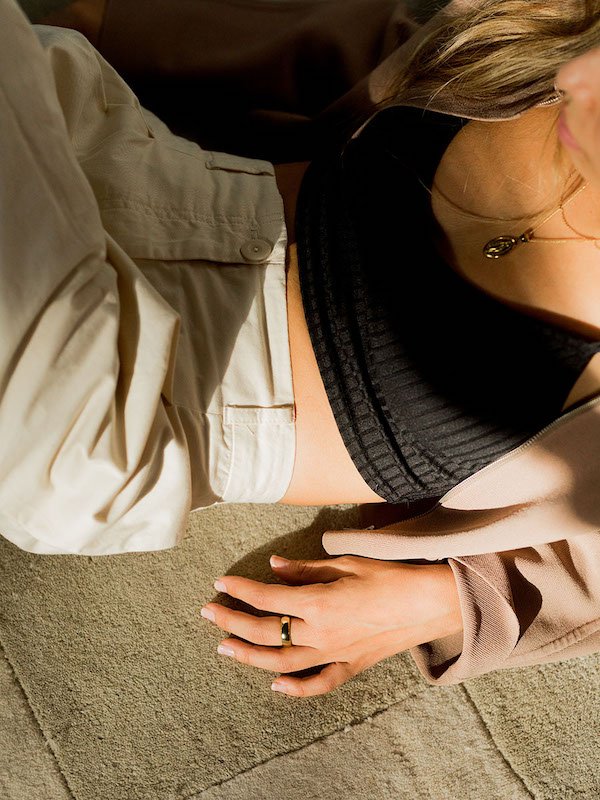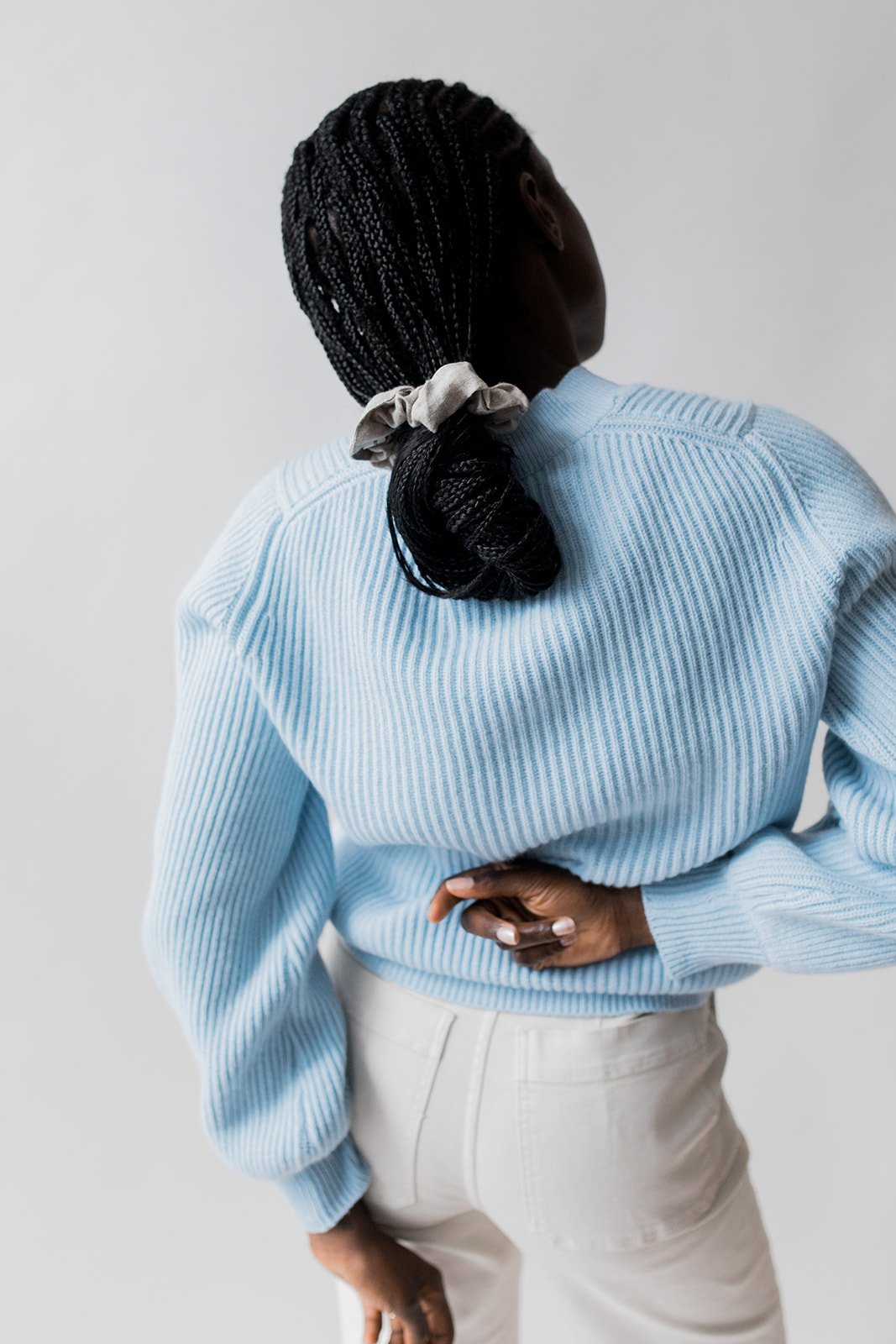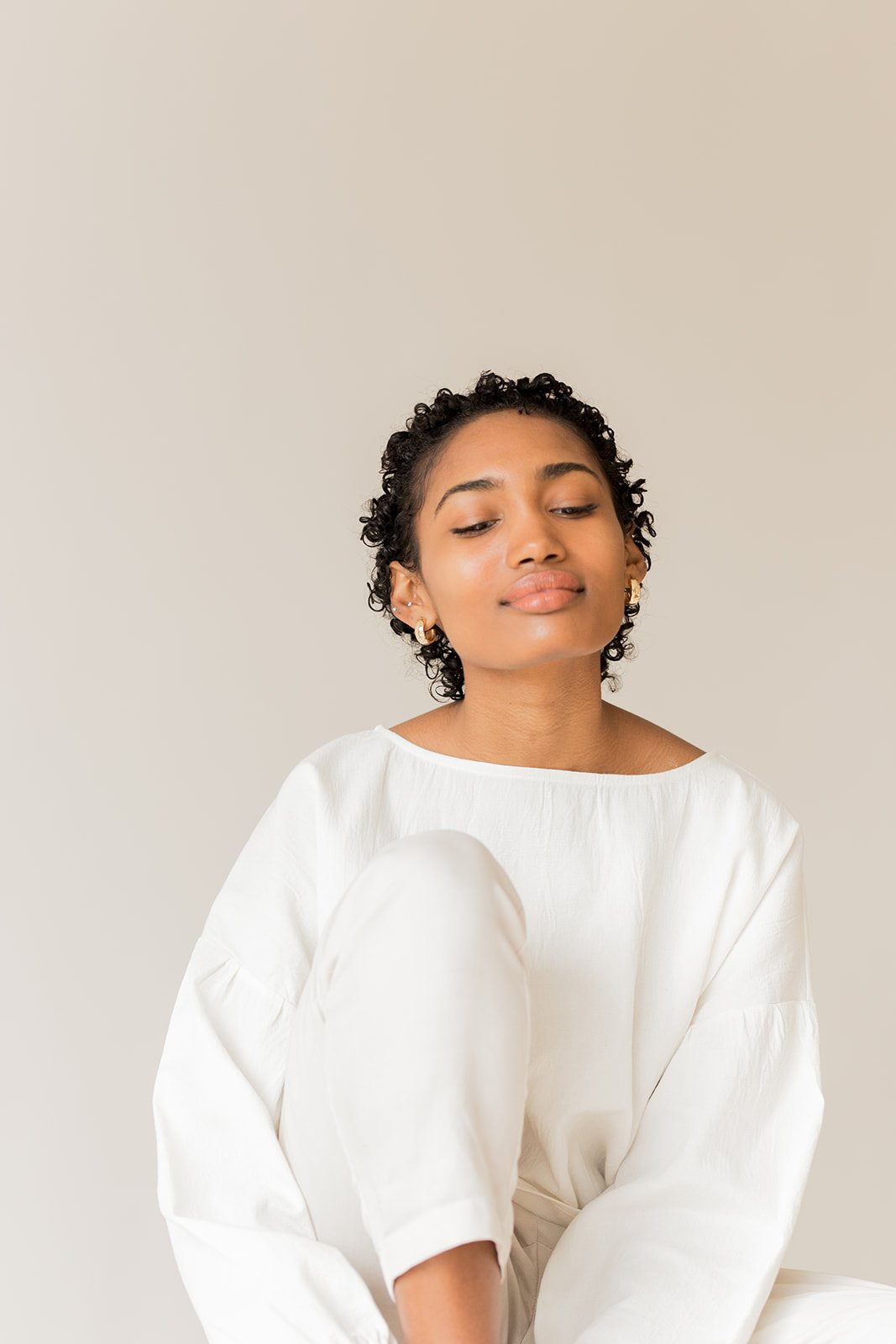
Getting An IUD Was The Best Health Decision I Ever Made
An Ode To My Miracle Mirena
The first time I ever had my period at 11 years old, I was wearing white pants. I should have known then that it was an omen of things to come.
To put it lightly—unlike my flow—my periods have always been brutal. I wore super-maxi pads with wings throughout my adolescence and, by the time I was 18, my PMS had evolved into full-blown Premenstrual Dysphoric Disorder (PMDD).
An extreme form of PMS, my PMDD would leave me irritable, anxious, unable to sleep (or conversely, overwhelmingly sleepy), and constantly hungry during the two weeks before my period. Physically, I’d be bloated, tender, and plagued with headaches. There were even instances where I’d perceive myself differently; looking in the mirror, my teeth or skin or body would look drastically different from one day to the next.
If you’ve been following along with the math, that’s two weeks of PMDD followed by one week of heavy bleeding during my six-week cycle. My period was ruling over half of my life. It was debilitating and defeating. And so, when I was 18, I turned to birth control.
“Two weeks of PMDD followed by one week of heavy bleeding during my regulated six-week cycle. My period was ruling over half of my life.”
Birth control pills had worked wonderfully for my friends, even the ones who had tough times of the month like I did. But unfortunately for me, the pill just meant trading in my unbearable periods for unbearable symptoms like severe hives—and a lack of insurance coverage for the only pill that did work.
I felt like I was running out of options until I started hearing about IUDs (intrauterine devices). Though IUDs have been around for more than a century, they didn’t become a common birth control option until the 1980s. By the 2010s, long-acting reversible contraceptives like IUDs were second in popularity behind the pill (and IUD insertion rates skyrocketed by 22 percent right after the 2016 election results).
IUDs, a T-shaped piece of plastic (free from BPAs or phthalates), are placed inside the uterus to help prevent pregnancy. While it sounds strange at first, the device is generally safe; ironically, since it’s plastic, it won’t break down inside of you. Supplemented by either copper or hormones, IUDs stop sperm from fertilizing an egg or stop the egg from implanting in the uterus. Hormonal IUDs, in particular, use progestin to thicken the cervical mucus and thin the uterine lining. The hormones can also shorten or completely eliminate a person’s period.
When, at 23, my doctor explained this to me, I didn’t hesitate in scheduling the insertion procedure. Say no more, doc—I’m in.
“One hurdle: I needed pre-approval from my insurance to cover the $1,000 expense.”
Of course, it wasn’t exactly that easy. One hurdle: I needed pre-approval from my insurance to cover the $1,000 expense. Technically, the Affordable Care Act in the US guarantees free contraception coverage, but getting said coverage was easier said than done (though this NPR feature provides some guidance). It’s an unfortunate reality in a patriarchal society that sees women’s wellness as a “bonus,” not a necessity.
Luckily (should luck really be a part of managing my health?), after a few phone calls explaining my circumstances to my insurance provider, I was approved for coverage.
The morning of my insertion appointment, I took four Advil beforehand at the encouragement of my OBGYN. As someone with health anxiety, taking four of anything seemed worrisome, but I trusted my doctor and hoped it would make all the difference.
Once I was in the patient room, I laid on the table with my legs wide open in stirrups—you’re welcome for that visual—and stared nervously at the ceiling, willing a positive experience. My OBGYN gently reminded me that, because I’d never given birth before, inserting anything into my cervix would likely result in pain. We were forcing an opening where there’d never been one, though the entire process would take just two minutes flat.
Okay, I can do this, it’s only a few minutes. I kept repeating to myself as she inserted the speculum, similar to a routine pap smear. Anxious with anticipation, I forced my nails into my palm, hoping to cancel out any pelvic pain.
“In keeping her promise, [the insertion] really was over in two minutes, albeit two painful ones.”
The moment she opened my cervix for insertion, it felt like the worst “pinch” I had ever experienced, followed immediately by cramping. She then released the IUD’s arms to hold it in place, removed the outer tube, and trimmed the IUD string. In keeping her promise, it really was over in two minutes, albeit two painful ones.
After driving myself home (I don’t recommend this; please bring a loved one if you can!), I went straight into recovery mode, laying in bed with a hot bottle over the next 24 hours. In the days after, I experienced more cramping—an irony considering I didn’t have cramps around my actual period—but eventually, the cramps subsided as I waited for my next flow.
My first period afterward seemed mostly the same, though I noticed it was lighter and shorter. In between, I began spotting frequently; not enough for a tampon, but enough for a pantyliner. I Googled frantically as the spotting continued over weeks, though my OBGYN noted in my follow-up that it’s a common side effect for three to six months following insertion.
After about four months, my period went away altogether—bless!
It’s now been almost seven years since that first insertion, and the only lingering side effect I’ve had since is spotting irregularly. I’ve accepted this and always carry a pantyliner with me just in case; it’s a bargain I’m very willing to make.
“Despite the initial pain during insertion and frequent spotting, I’d do it all again.”
Because, despite the initial pain during insertion and frequent spotting, I’d do it all again. (In fact, I have; I’m on my second Mirena now, as they usually last five years.)
My IUD has been my life’s saving grace. I no longer have intense mood swings or irritability—especially not for weeks—and I haven’t bled heavily once. I don’t have to fumble to find my pill pack at 7 PM each night or stock up on the heaviest tampons at CVS anymore.
And when I see myself in the mirror, I only see me, as I am. No perceived yellow teeth, no hives, no over-the-top hormonal acne. And I’ve stayed this way for years—a homeostasis I haven’t experienced since starting my period two decades ago.
My Mirena has helped me reclaim my life in a way nothing else single-handedly has.
There are many IUD horror stories out there, but I’m optimistic that my experience can serve as a reminder that there are also plenty of positive stories too. I’m eternally grateful to have found relief thanks to my Mirena, and I hope that whatever your preference—IUDs, pills, rings, natural remedies—you’re able to find what works best for you, too, should you need it.
“My Mirena has helped me reclaim my life in a way nothing else single-handedly has.”
Henah Velez (she/her) is an Editor at The Good Trade. She holds a Master’s in Social Entrepreneurship and is a proud Rutgers grad. Originally from NJ, Henah’s now in Santa Barbara, CA, where she loves shopping small, hanging with her pets, or traveling. Say hi on Instagram!




